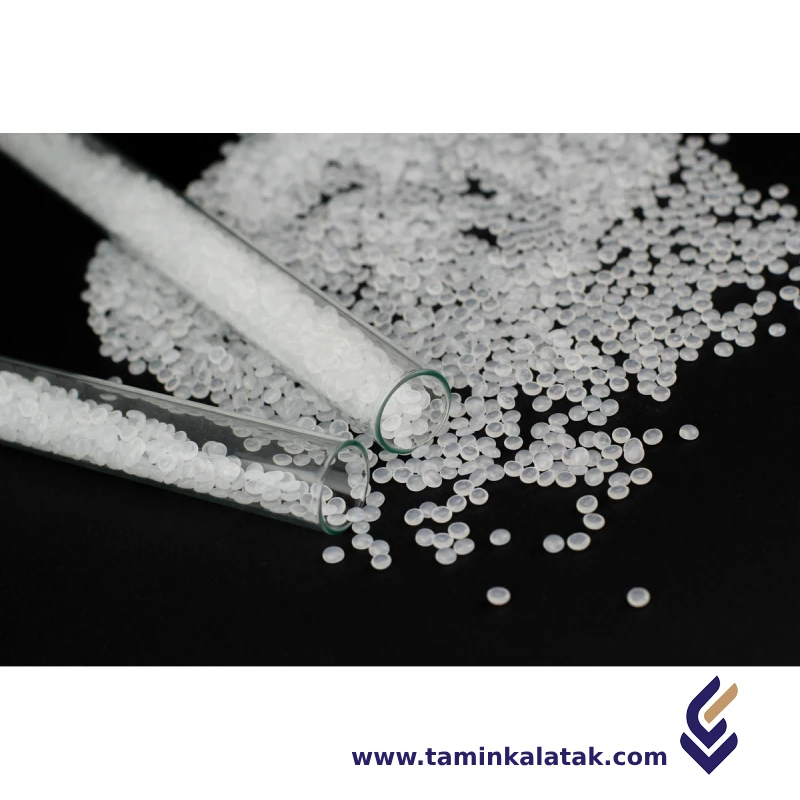Polymers are made up of very large molecules made up of many repeating units called monomers, which ultimately form this long polymer chain
A compound is a polymer blend mixed with additives, fillers, and reinforcements to achieve specific properties for end-use applications. A masterbatch is a concentrated mixture of additives or pigments in a carrier resin, used to enhance plastics without altering their base properties.
LDPE Compound
LDPE (Low-Density Polyethylene) Compound is a material made by blending LDPE resin with additives, fillers, or other polymers to enhance its properties for specific applications. LDPE itself is a thermoplastic polymer known for its flexibility, low density, chemical resistance, and good processability.
Structure LDPE Compound
The structure of an LDPE compound consists of a base polymer, which is low-density polyethylene (LDPE) with a highly branched molecular structure that gives it flexibility and low density. Fillers such as talc or calcium carbonate may be added to modify properties like rigidity, strength, and cost. Stabilizers, including antioxidants and UV stabilizers, help enhance thermal and environmental stability. Processing aids like lubricants and flow enhancers improve manufacturability, while plasticizers may be included to adjust flexibility. Pigments and additives can also be incorporated to achieve desired colors and functional properties. The overall composition of an LDPE compound depends on its intended application and performance requirements.
Properties LDPE Compound
LDPE compound has a combination of properties that make it suitable for various applications. It is flexible, lightweight, and has a low density due to its highly branched molecular structure. It exhibits good impact resistance, excellent chemical resistance, and high moisture barrier properties, making it ideal for packaging applications. LDPE compound also has good electrical insulation properties, which make it useful in cable and wire coatings. It has a relatively low melting point, allowing for easy processing through extrusion, injection molding, and blow molding. The material is resistant to environmental stress cracking and has good transparency, although additives can be used to modify its appearance and mechanical properties. Its thermal stability and UV resistance can be enhanced with stabilizers, making it more durable for outdoor applications.
Applications of LDPE Compound
- Packaging materials such as plastic bags, films, and wraps
- Containers, bottles, and squeeze tubes
- Wire and cable insulation
- Medical and pharmaceutical packaging
- Toys and household goods
- Agricultural films and greenhouse covers
- Coatings for paper cups and cartons
Advantages of LDPE Compound
- Highly flexible and lightweight
- Excellent chemical resistance
- Good impact strength and toughness
- Moisture-resistant with a good barrier to water
- Easy to process through extrusion, blow molding, and injection molding
- Good electrical insulation properties
- Transparent and printable for packaging applications
Disadvantages of LDPE Compound
- Lower tensile strength compared to other plastics
- Poor resistance to high temperatures and heat deformation
- Prone to environmental stress cracking
- Not as rigid or strong as HDPE
- Difficult to recycle in some cases due to contamination in mixed plastic waste
Applications
| Applications | , , , |
|---|
LDPE Compound
| Products | Grade | MFI (g/10 min) | Density (g/Cm3) | Process Method | Applications | Data Sheet | MSDS |
|---|---|---|---|---|---|---|---|
| LDPE Compound | 2420K | 4,00 | 924,00 | Blown film extrusion Cast film extrusion Extrusion coating Injection molding | Food-grade films Coatings Protective films Shrink films | ||
| LDPE Compound | 2420H | 19,00 | 924,00 | Blown film extrusion Cast film extrusion | Bags and pouches Food packaging films Hygiene films Liner films Shrink films |







